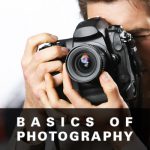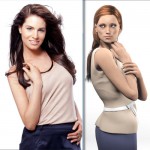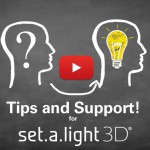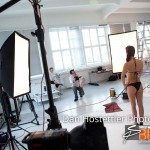More light sources do NOT automatically mean a better photo. That’s why you’re able to capture great pictures with only one flash head. It’s more of a matter with the general lighting and the right moment. Main question of lighting: What’s the later use of this picture? Application photo: If you’d like to shoot a picture for an application, you ... Read More »
General
Chapter 4: Just before your camera goes ‘click”
You should always have a plan in mind before you’d take your expensive camera and widely start shooting. How would you like your desired picture to look like? A good plan is more than half the battle and as well kepps you from having hundreds of unused pictures on your SD card or computer. Strt working more effectively! The ... Read More »
Quick Tips for set.a.light 3D – short and easy!
Here you’ll find a collection of very short videos containing helpful tips for your use of set.a.light 3D. Each video features only one or two functions and explains them shortly and to the point. The videos should help you operate set.a.light 3D even better and more effectively. In addition you might find some features that are new to you. Quick Tip: ... Read More »
Chapter 3: Light formers / types of light / lighting design
Types of light: Soft light: Soft light, indirect light or also known as diffuse light, is produced through extensive light sources. We know diffuse light from nature, for example sunshine falling through a cloudy sky. A great characteristc of it is its uniform illumination and its minimization of shadows. Their contours are blurry and very soft. In studio photography you ... Read More »
Chapter 2: Starting with portrait photography
Portrait photography contains images of living things, mostly humans, but also creatures and animals. This famous genre of photography is all about “showing them in their correct light” as one would say. We want to point out characteristics of them or capture their emotions or their physical and emotional condition. Age, attractiveness,. beuaty or gender do mostly play a submissive ... Read More »
Chapter 1: How to set up your camera manually
In today’s online blog tutorial we’ll learn about the manual basic functions and settings of a modern reflex camera. Manually settings (M) By adjusting the settings manually, we make sure that we’re able to work correctly in our photo studio. We can change the aperture, ISO and the exposure time. Adding on to this, we’ll talk about the manual white ... Read More »
FAST GLAM – Light Modifiers: Beauty Dish
A beauty dish is a large, bowl-like reflective circular dish which ranges anywhere from 16 to 30 inches in diameter and is mostly used when shooting portraits and glam-style imagery. “FAST GLAM” Photo Shot feat. Melisa Mendini Creating a generally softer light is one of the functions of a beauty dish. Its coated interior which reduces basic highlights is what causes the ... Read More »
How to Use a Finished Image to Determine its Lighting Setup in Reverse?
In this video, we show you how you can backtrack and re-establish an original lighting setup on basis of a finished image: Vom fertigen Bild rückwärts zum Lichtsetting - set.a.light 3D | DEWatch this video on YouTube- Mit Klick auf das Video, wird eine Verbindung zu Youtube aufgebaut, es gelten damit die Datenschutzbestimmungen von Youtube. - The first step is ... Read More »
Tips and Support for set.a.light 3D Users
We have created a few short explainer videos for you to ensure you’ll have a great user experience with set.a.light 3D. The videos are created in an extremely short and sweet style to actually make it fun watching them. This allows you to quickly learn how to work effectively with set.a.light 3D. 1# Lichtformer tauschen, Duplizieren (kopieren), DragOptionWatch this video ... Read More »
How to Build Your First Lighting Setup
1. Start with one light Some of you are eager to go and want to start off with a bunch of lights. But I believe this to be an area where less is generally more. So try starting out with just one main light (flash head and modifier). Once you are pleased with the quality of the first results, go ... Read More »
 elixxier – Photo Blog Light settings and lighting structures for studio and outdoor photography. Tips and tricks for set.a.light 3D – The photo studio and light simulation for photographers.
elixxier – Photo Blog Light settings and lighting structures for studio and outdoor photography. Tips and tricks for set.a.light 3D – The photo studio and light simulation for photographers.







